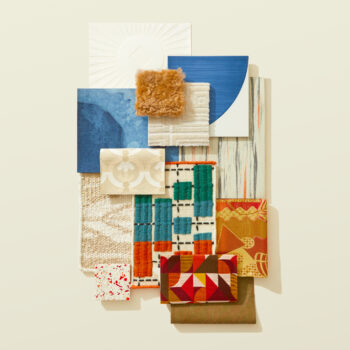
The concept of wabi-sabi, rooted in Japanese aesthetics, celebrates the beauty of imperfection, impermanence, and the understated elegance of the natural world. When applied to residential kitchens, Wabi-sabi transforms the space into a sanctuary of calm and authenticity, where each element tells a story and every flaw is embraced as part of the design’s charm.
Muted and earthy-toned color palettes evoke a sense of tranquility and simplicity. Shades such as soft greys, warm beiges, dusty greens, and gentle blues dominate the space. These colors are reminiscent of natural elements and are intended to create a soothing backdrop that allows the imperfections and unique characteristics of the materials to stand out. For example, a kitchen with weathered wooden cabinets painted in a faded sage green or soft taupe will radiate a serene ambiance while highlighting the natural grain and textures of the wood.
The essence of wabi-sabi lies in the appreciation of natural materials and their inherent imperfections. In the kitchen, this translates to the use of materials such as reclaimed wood, hand-thrown ceramics, and unpolished stone. Countertops crafted from rough-hewn granite or quartzite with visible flecks and veins become focal points of the design, each imperfection adding character and depth. Similarly, handcrafted ceramic tiles with subtle variations in glaze and texture contribute to a sense of authenticity and individuality.
Open shelving made from reclaimed timber, with its knots and irregularities, can provide both storage and visual interest. The combination of these materials not only underscores the philosophy of wabi-sabi but also creates a kitchen that feels lived-in and welcoming, as opposed to the often sterile and uniform appearance of contemporary designs.
Wabi-sabi favors simplicity and functionality over ornate details and excessive decoration and this is reflected in the layout and organization of the kitchen. Clean lines, uncluttered surfaces, and minimalistic cabinetry are key elements. Handles and fixtures are often chosen for their simplicity and durability rather than their decorative appeal. A simple wooden dining table with mismatched chairs or a vintage sideboard repurposed as a pantry can embody the spirit of wabi-sabi, offering both practicality and aesthetic pleasure.
The ambiance is one of serenity and warmth. The intentional use of natural light—through large windows or skylights—enhances the space, allowing the changing light to highlight the beauty of the materials and their imperfections throughout the day. Soft, ambient lighting, such as pendant lamps with simple, organic shapes or lantern-style fixtures, can create a cozy and inviting atmosphere.
Foster a sense of peace and mindfulness in wabi-sabi Kitchens focusing on natural materials, understated design, and a harmonious color palette, to become more than just a functional space—it evolves into a place where one can find solace and inspiration in the beauty of the imperfect and the transient.
Want to learn more about bringing minimalist style into your space? Check out our article on, What Defines Japandi Style?







